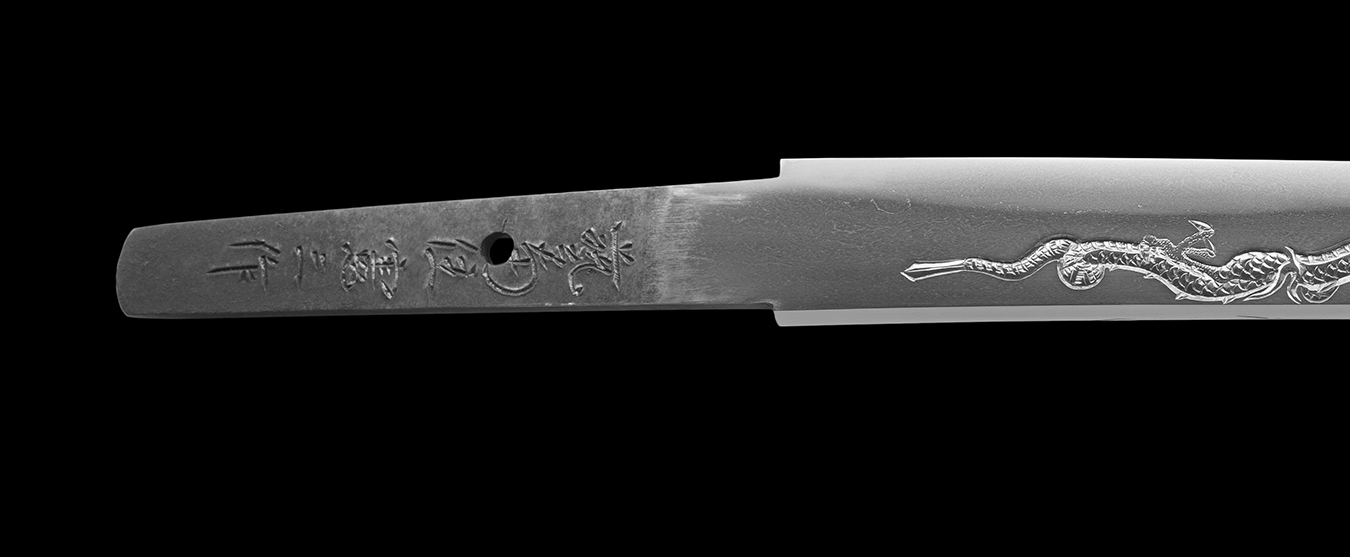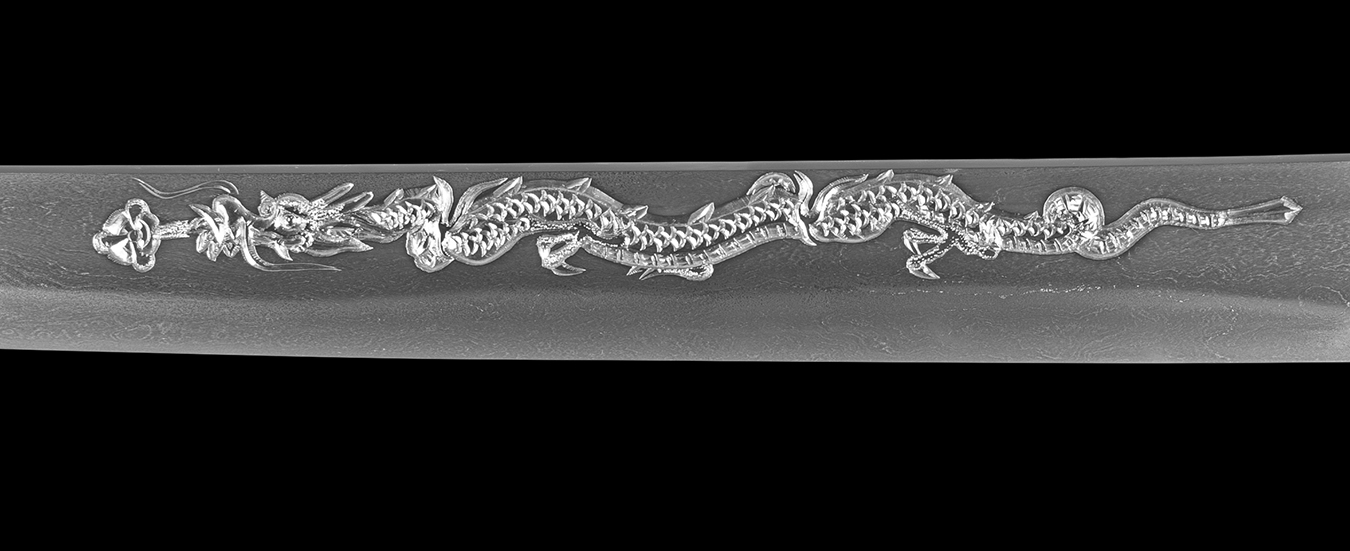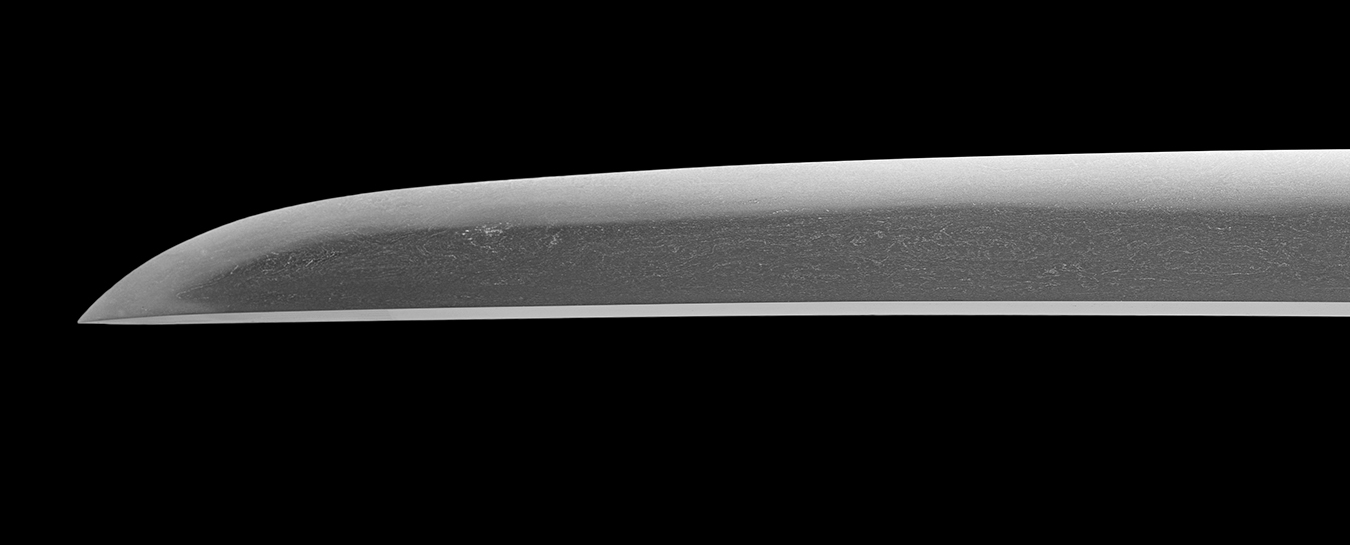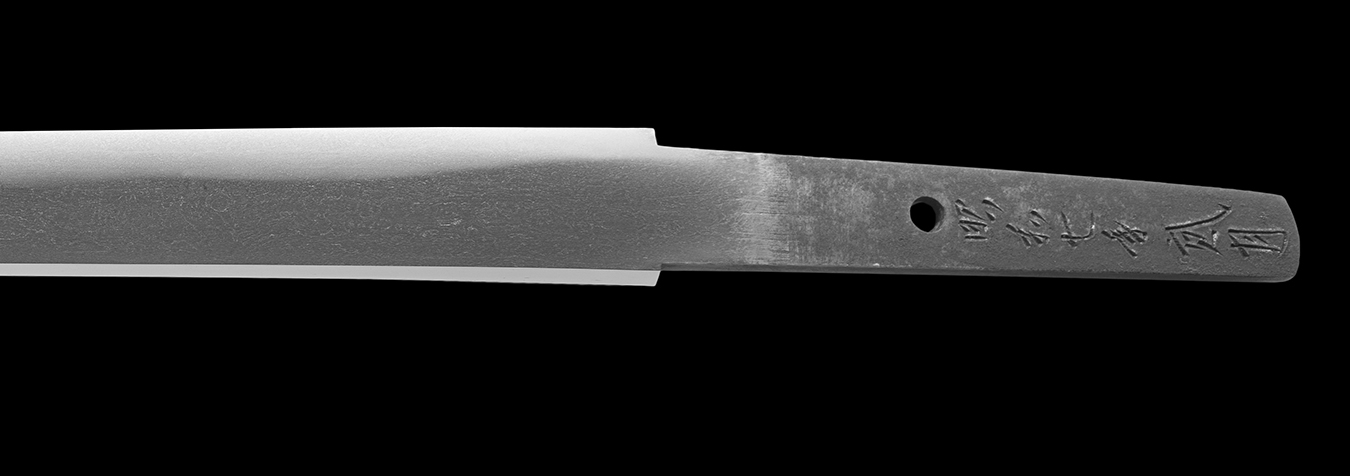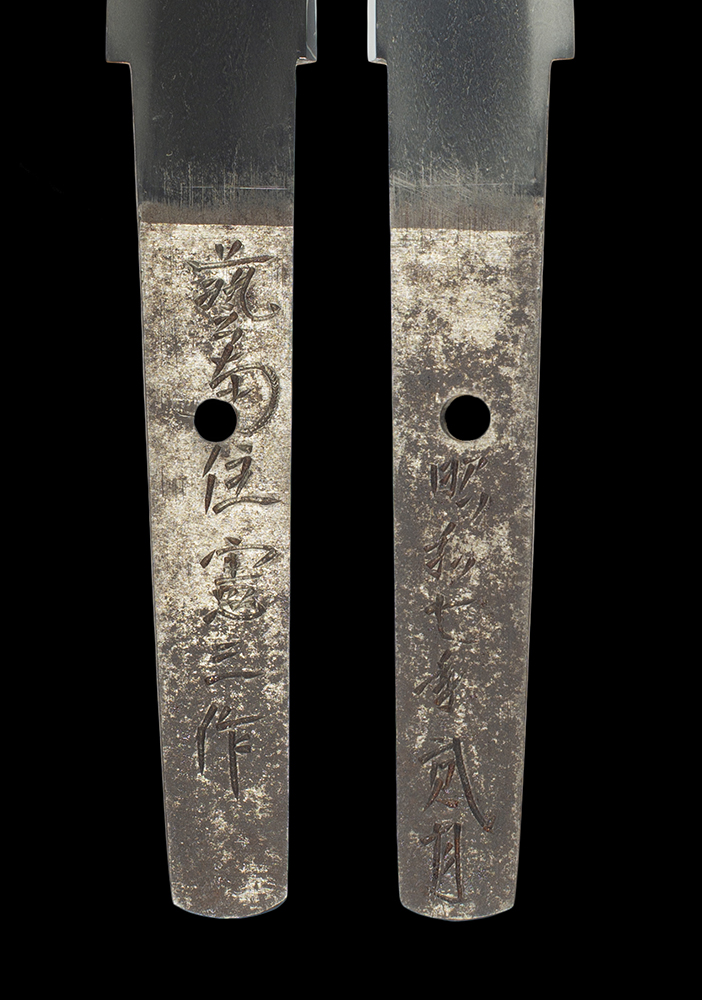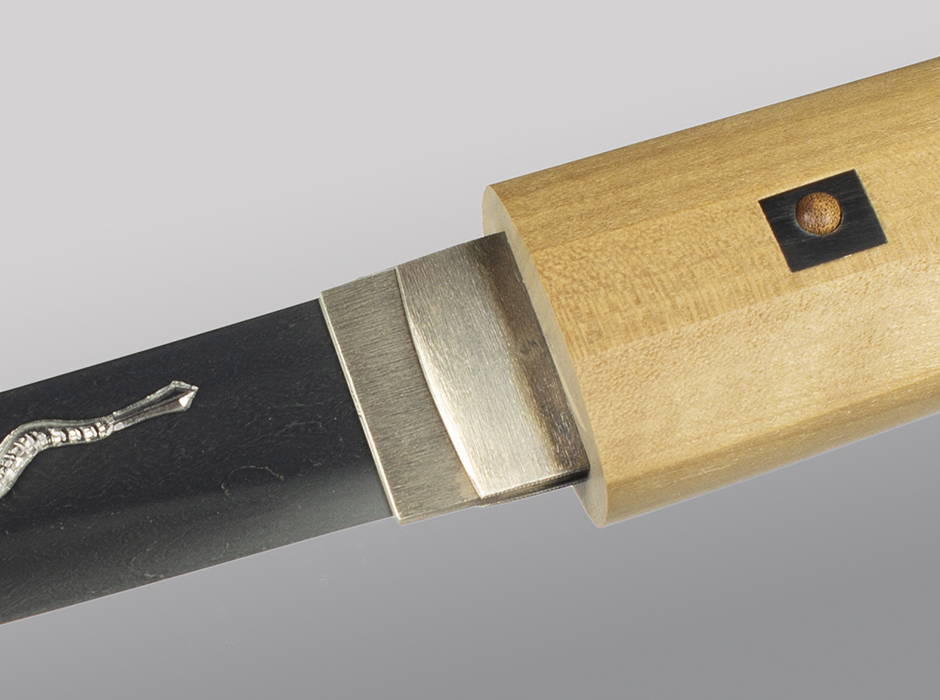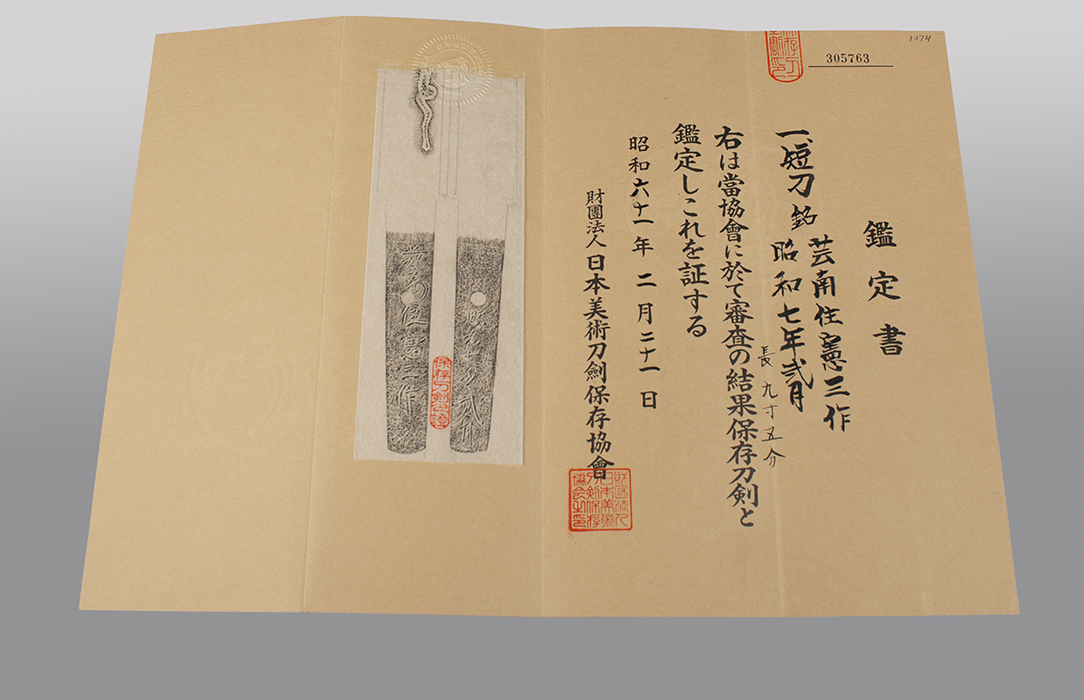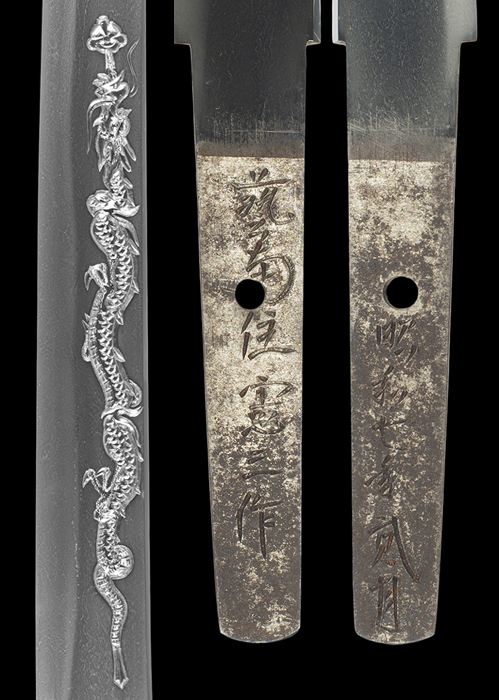|
| |||||||||||||||||||||||||||||||||||||||||
Kitae : Itame mixed with masame. Ji-nie is present and especially dense along the mune.
Hamon : Nie-deki gentle notare of medium width. The nioi-guchi is bright. The are vivid nijuba and sunagashi can be seen.
Boshi : Ko-maru with a short kaeri on the omote. The ura is more pointed and with a short kaeri.
About this sword : This is a tanto by Kotani Yasunori. He was born in 1909. His father was a tool maker and they lived in Hiroshima. In his early years, he became an student of his uncle, Kajiyama Yasunori. His civilian name was Kotani Kenzo. He went to Tokyo in 1933 with his uncle and cousin (Kajiyama Yasutoshi) where they entered the Yasukuni Jinja. Kotani Yasunori served as his uncles sakite (hammer man) during his initial time at the shrine. He received his name of Yasunori from General Hayashi Senjuro in 1935. While at the Jinja, he made blades for some important individuals and events. The war sword of Field Marshall Terauchi was by Kotani Yasunori. Records state that he made about 1600 swords at the Yasukuni Jinja. He passed away in 2003 in Kure Hiroshima. He was the last living Yasukuni Shrine smith. This blade was made in 1932 and bears his early mei of Kenzo. This mei also records the location of Geinan, which is southern Hiroshima.
The horimono of this sword is not ato-bori and dates to the blades time of prodiction. It is well-rendered with crisp detail and a nicely balanced composition. The overall style of the dragon shows a delightful Umetada flavor with its twisted tail. The condition of horimono is very good.
This blade was sent to Japan for restoration and Shinsa in mid 1980s. The polisher was Kotoken Kajihara. Kajihara was a famous top level sword polisher and author. He wrote "Nihonto Swords of Japan A Visual Glossary". The shira-saya and solid silver double habaki were also made at that time. The tanto was submitted for shina and received an NBTHK Hozon paper in 1986. Yasunori was still alive at this time. Normally, the NBTHK will not issue papers for the works of living smiths. A rare occurrence for sure.
An exciting early work by Kotani Yasunori in top quality polish. Ubu, signed, dated, horimono and with an NBTHK Hozon paper. A great opportunity for those that focus on Yasukuni Shrine works and advanced collectors alike.
SOLD


